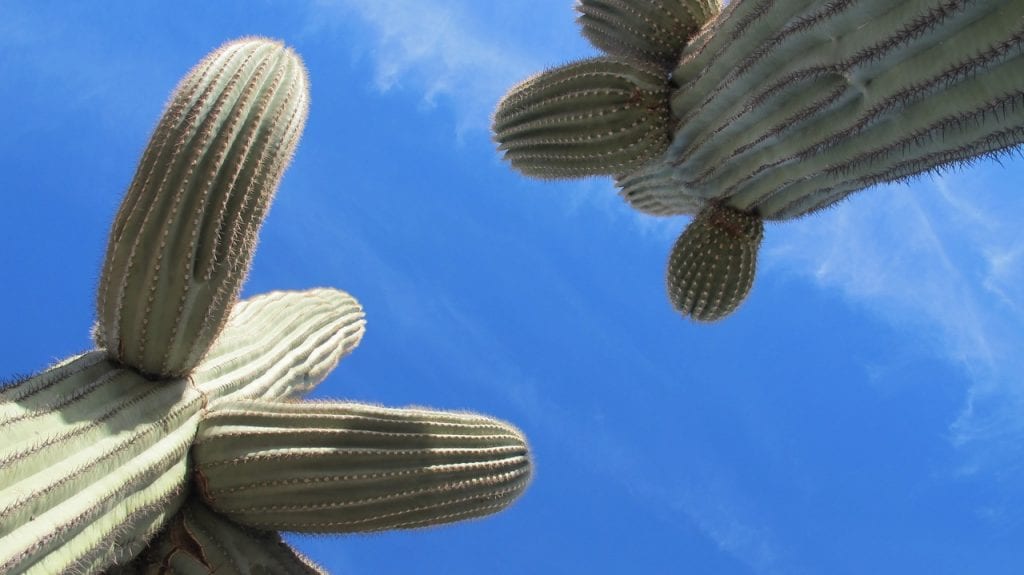
The large cactus They are plants that attract both attention for their size and for the flowers that many come to produce. And that is not to mention that the conditions in which they are found are not exactly the easiest to survive, namely: extreme temperatures in several points higher than 40ºC, soil with very few nutrients, rains that are only recorded a few weeks a day. anus…
But the truth is that, after 30 or 40 million years of evolution, they have managed to adapt exceptionally well. Thanks to this, today humans we can enjoy them in our gardens, as long as we provide them with the necessary care. These are the most popular large cacti that you find in nurseries and garden stores.
Selection of large cacti
Large cacti are wonderful. Their growth rate is usually slow, but that doesn't matter: they decorate the garden from a very young age, so if you want to have one but don't know which one, take a look:
The giant carnage

Image - Wikimedia / Burley Packwood
Known as saguaro or saguario, it is by far the most popular. It is the typical cactus that appears in photos taken in the desert regions of America, specifically Sonora. It has a columnar bearing, little or no branching, with stems that measure up to 65cm in diameter and more than 12 meters high. (23,8m specimens have been found). It has 12 to 24 ribs, from which 12 radial spines sprout and between 3 and 6 central spines up to 7cm long. The flowers are white, 12cm in diameter.
In cultivation it is an interesting plant, being able to withstand frosts down to -9ºC if the specimen is adult, although the ideal is not to drop below 0 degrees. In addition, its fruit is edible. But it is very, very slow: it takes 30 years to reach 1 meter in height.
Cephalocereus senilis

Image - Wikimedia / Frank Vincentz
It is popularly known as the old man's head or old man cactus, and it is a columnar cactus without ramifications that reaches up to 15 meters high. It has very few spines, fine, about 2-4cm long. Although its main attraction is its woolly appearance, whose hairs help it avoid sunburn. The flowers are red, yellow or white, and only sprout when the cactus is over ten years old and has an average height of 2m.
It requires soils with excellent drainage, very little watering and being in an area with a warm or warm-temperate climate.
Echinopsis terschekki
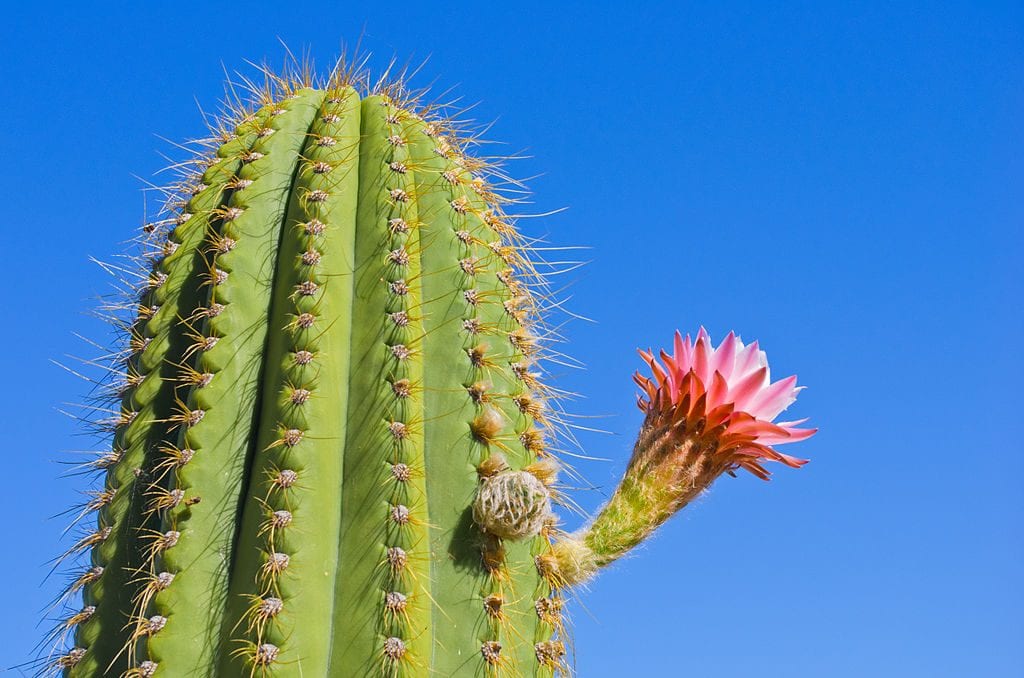
Image - Wikimedia / Antoine Taveneaux
Formerly known as Trichocereus PasacanaNowadays it is sometimes popularly called 'pasacana'. It is a species with arborescent bearing, quite branched, that reaches up to 12 meters high. The stems are 10 to 20cm in diameter, and have about 8 to 14 ribs. The spines are 2 to 8cm long, and are 8 to 15 radial and 1 central. The flowers are white, 15 to 20cm.
In cultivation it is simple: it only needs direct sun, well-drained soil, and little watering. It can resist cold and frost down to -3ºC if they are punctual and of short duration.
Pachycereus pringlei
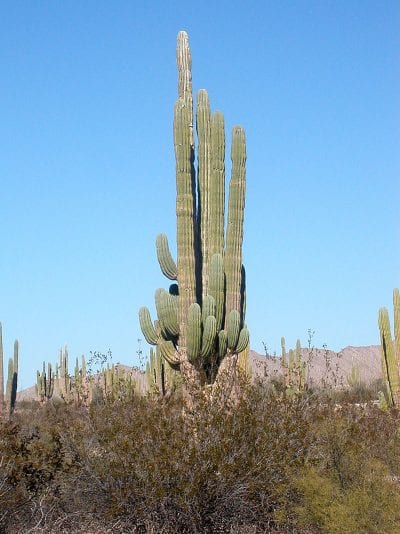
It is known as cardón, and it is a columnar cactus with normally branched stems that they grow to about 19 meters tall. The trunk is up to 1 meter in diameter. It has between 10 and 16 ribs, with 20 spines between 2 and 3 cm in length, except the central 1 to 3, which are longer. The flowers are 5 to 8,5cm long and white.
In appearance it is quite similar to the saguaro, but it is faster (it grows at a rate of about four inches per year), and it is able to withstand weak frosts from a young age, but it is recommended that it does not drop below 0 degrees.
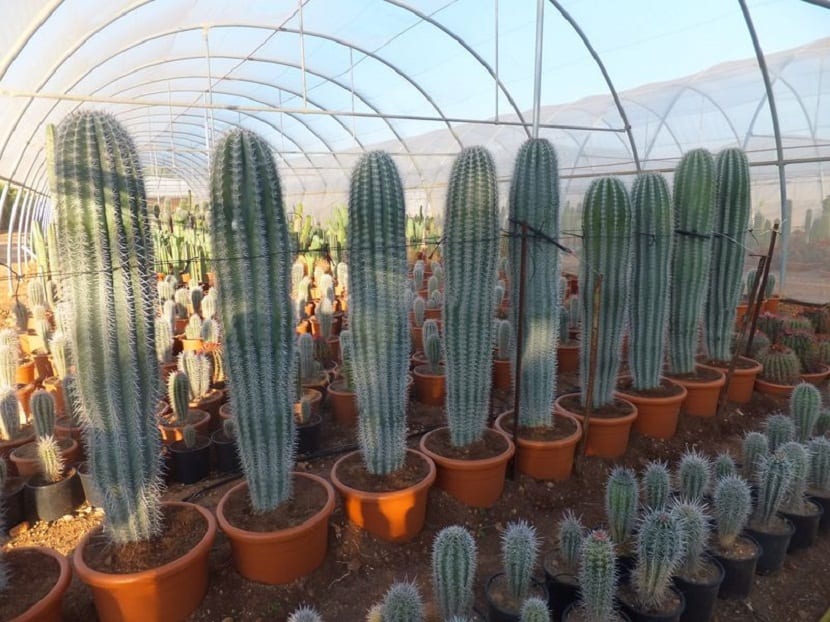
Pilosocereus pachycladus (before Pilosocereus azureus)

Of all of the genre, the Pilosocereus pachycladus it is one of the few that is cultivated frequently. The reason is the bluish color of its stems, which they grow straight in an upright position and are between 5,5 and 11cm thick and up to 10 meters high. They have 5 to 19 ribs, and areoles from which arise 1 to 12 central spines 1 to 30mm long, and between 8 and 18 radial spines 5 to 15mm long. The flowers are white and are 4 to 7cm long by 2 to 5cm in diameter.
It is sensitive to frost, although from experience I will tell you that it resists weak frosts (up to -2ºC) if the land is dry.
Stenocereus thurberi
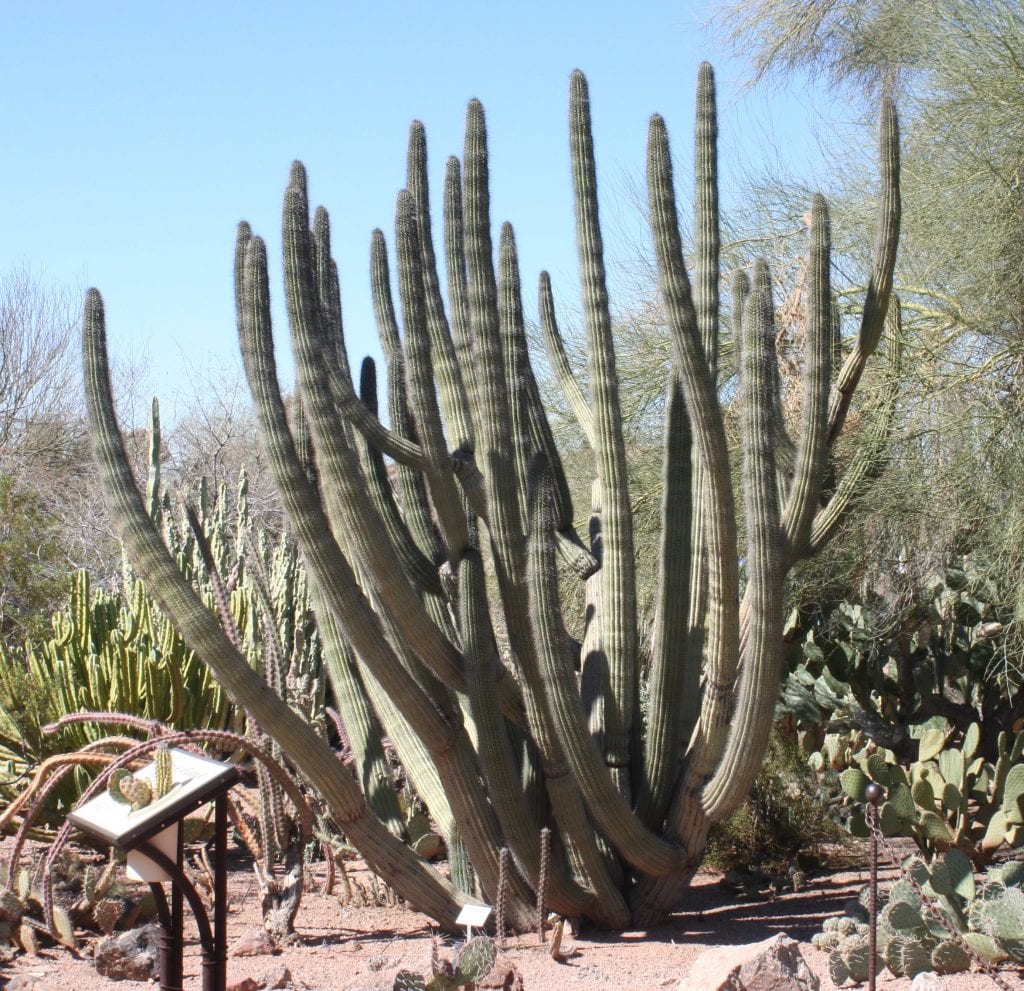
It may be one of the lesser known cacti on this list, but believe me if I tell you that it is one of the easiest to care for. It is a shrub up to 8 meters high, highly branched, with stems that have 12 to 19 ribs. It has 1 to 3 central spines 2 to 5 cm long, and 7 to 9 radial spines of 1 cm. The flowers are white or pale in color, about 10cm in diameter.
It grows about 5 to 10cm in height per year if it is planted in the ground, it resists weak frosts of up to -4ºC and, in case of occasional flooding (such as those caused by torrential rains in the Mediterranean region during autumn) it does not suffer damage. .
What are the care of large cacti?
Now that we've seen the most popular large cacti, it's time to know how to care for them, right? So let's go there:
Location
They are plants that They must be in a very bright area, in full sun if possible. Unless we live in an area where winter is very cold, the ideal would be to have them outside, otherwise it will be necessary to protect them in a greenhouse or indoors.
Earth
- Garden: I insist, soil with excellent drainage. These cacti are very sensitive to excess water, and although there are some species that can tolerate occasional floods (occurring once a year or less), you should not take risks.
As for the pH, they grow in neutral or slightly alkaline ones. - Flower pot: I advise planting them on the pumice (for sale here), or else in a universal substrate mix (for sale here) with perlite (for sale here) in equal parts.
Irrigation

Image - Wikimedia / Amante Darmanin from Malta // Pachycereus weberi
escaso. You have to let the land dry between waterings. If you have them in a pot, do not put a plate under them.
Subscriber
During spring and summer It is advisable to pay them with a fertilizer for cactus (for sale here) following the instructions specified on the package.
Multiplication
Large cacti multiply mainly by seeds, and some by cuttings in spring or summer. Let's know how to do it:
Seeds
The seeds have to be sown in seedbeds (pots, seedling trays, ...) with universal substrate mixed with perlite in equal parts, and burying them with a very thin layer of soil or river sand previously washed. The seedbed is then placed near a heat source, in semi-shade, and is kept moist but not waterlogged.
This way they will germinate in about 10 days.
Cuttings
It is more difficult, although not impossible. Cut a stem that you see that is healthy, growing strongly, let the wound dry in semi-shade for 7 to 10 days, and then plant it in a pot with a pumice.. Put it in a sheltered area, protected from the sun, and keep the substrate slightly damp.
If all goes well, it will emit its own roots in 20 days. You can help him by watering occasionally with liquid rooting hormones (on sale here).
Plagues and diseases
They are sensitive to attack by mealybugs, which must be fought with an anti-mealybug insecticide, or with natural products such as diatomaceous earth. Likewise, the risks must be controlled a lot, otherwise the fungi could harm them, in which case they should be treated with fungicides.
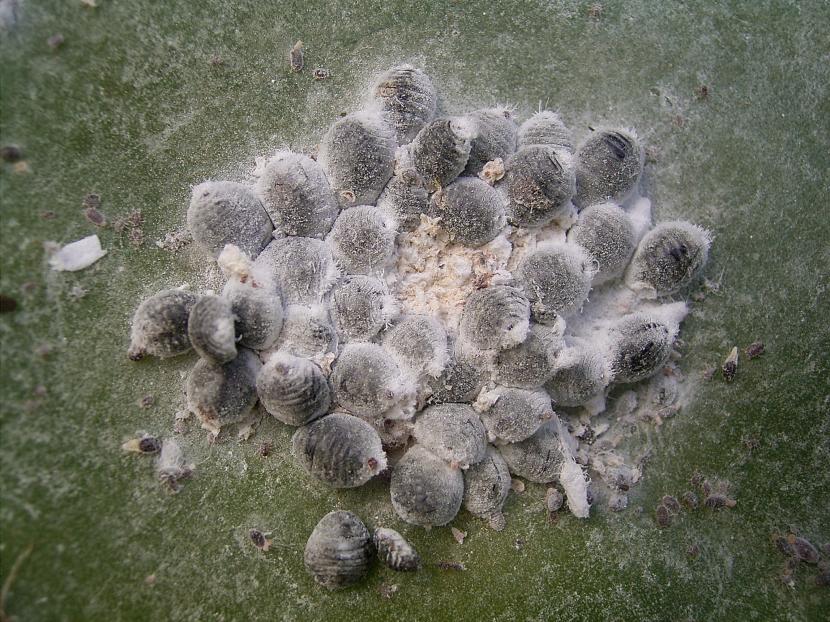
Planting or transplanting time
En spring, when the risk of frost has passed.
Rusticity
It depends on the species, but in general they do not support strong frosts.
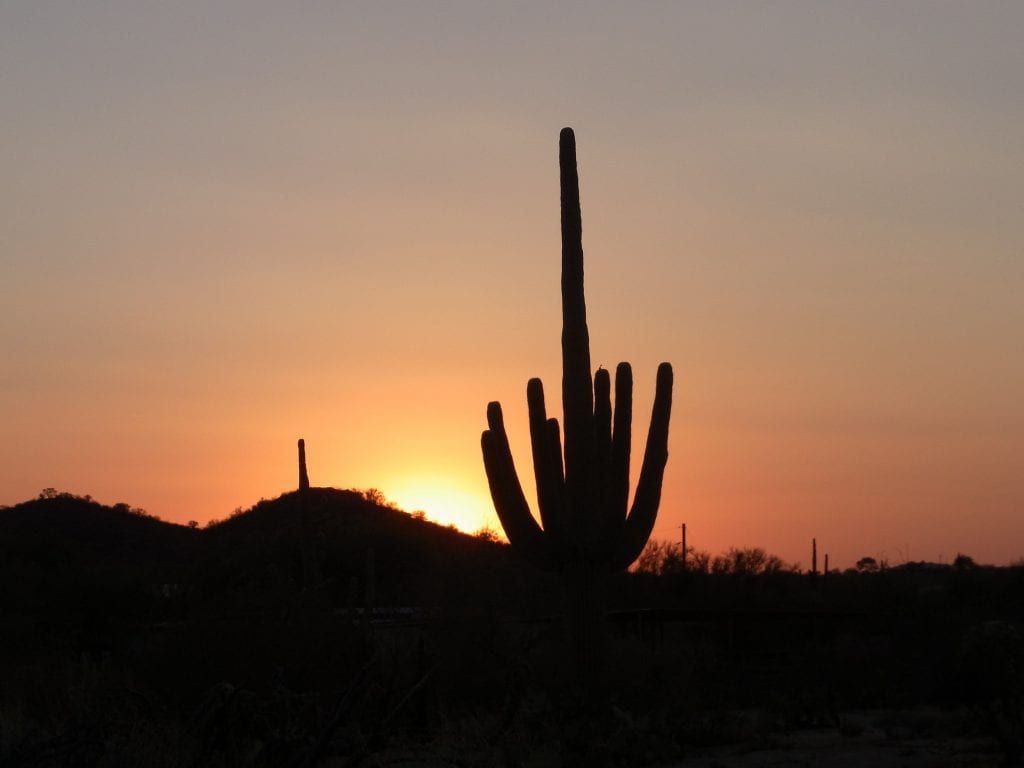
Enjoy your big cacti 🙂.